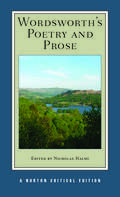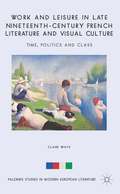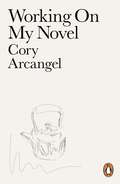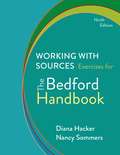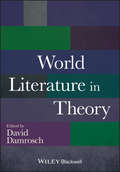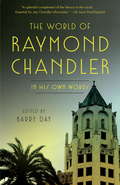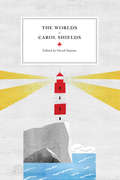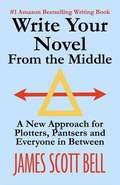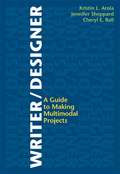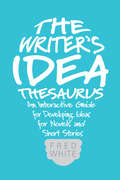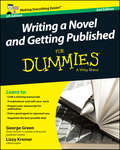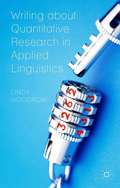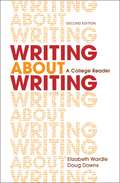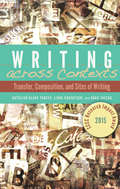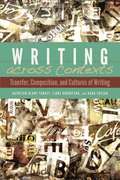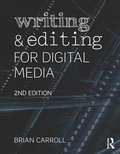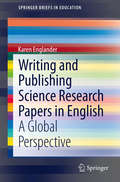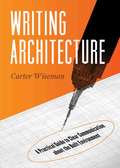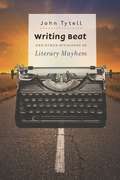- Table View
- List View
Wordsworth’s Poetry and Prose
by Nicholas HalmiThis Norton Critical Edition presents a generous selection of William Wordworth's poetry (including the thirteen-book Prelude of 1805) and prose works along with supporting materials for in-depth study. Together, the Norton Critical Editions of Wordsworth's Poetry and Prose and The Prelude: 1799, 1805, 1850 are the essential texts for studying this author. Wordsworth's Poetry and Prose includes a large selection of texts chronologically arranged, thereby allowing readers to trace the author's evolving interests and ideas. An insightful general introduction and textual introduction precede the texts, each of which is fully annotated. Illustrative materials include maps, manuscript pages, and title pages. "Criticism" collects thirty responses to Wordsworth's poetry and prose spanning three centuries by British and American authors. Contributors include Samuel Taylor Coleridge, Percy Bysshe Shelley, Felicia Hemans, Ralph Waldo Emerson, Lucy Newlyn, Stephen Gill, Neil Fraistat, Mary Jacobus, Nicholas Roe, M. H. Abrams, Karen Swann, Michael O'Neill, and Geoffrey Hartman, among others. The volume also includes a Chronology, a Biographical Register, a Selected Bibliography, and an Index of Titles and First Lines of Poems.
Work and Leisure in Late Nineteenth-Century French Literature and Visual Culture
by Claire WhiteIn this engaging new study, Claire White reveals how representations of work and leisure became the vehicle for anxieties and fantasies about class and alienation, affecting, in turn, the ways in which writers and artists understood their own cultural work.
Working On My Novel
by Cory ArcangelWhat does it feel like to try and create something new? How is it possible to find a space for the demands of writing a novel in a world of instant communication?Working on My Novel is about the act of creation and the gap between the different ways we express ourselves today. Exploring the extremes of making art, from satisfaction and even euphoria to those days or nights when nothing will come, it's the story of what it means to be a creative person, and why we keep on trying.
Working with Sources: Exercises for The Bedford Handbook (Ninth Edition)
by Diana HackerThis useful workbook includes 60 exercise sets designed to give students practice with key research skills in MLA, APA, and Chicago styles. Topics include forming research questions and thesis statements, integrating sources, and avoiding plagiarism.
World Literature in Theory
by David DamroschWorld Literature in Theory provides a definitive exploration of the pressing questions facing those studying world literature today. Coverage is split into four parts which examine the origins and seminal formulations of world literature, world literature in the age of globalization, contemporary debates on world literature, and localized versions of world literature Contains more than 30 important theoretical essays by the most influential scholars, including Johann Wolfgang von Goethe, Hugo Meltzl, Edward Said, Franco Moretti, Jorge Luis Borges, and Gayatri Spivak Includes substantive introductions to each essay, as well as an annotated bibliography for further reading Allows students to understand, articulate, and debate the most important issues in this rapidly changing field of study
The World of Raymond Chandler: In His Own Words
by Raymond ChandlerRaymond Chandler never wrote a memoir or autobiography. The closest he came to writing either was in—and around—his novels, shorts stories, and letters. There have been books that describe and evaluate Chandler&’s life, but to find out what he himself felt about his life and work, Barry Day, editor of The Letters of Noël Coward (&“There is much to dazzle here in just the way we expect . . . the book is meticulous, artfully structured—splendid&” —Daniel Mendelsohn; The New York Review of Books), has cannily, deftly chosen from Chandler&’s writing, as well as the many interviews he gave over the years as he achieved cult status, to weave together an illuminating narrative that reveals the man, the work, the worlds he created.Using Chandler&’s own words as well as Day&’s text, here is the life of &“the man with no home,&” a man precariously balanced between his classical English education with its immutable values and that of a fast-evolving America during the years before the Great War, and the changing vernacular of the cultural psyche that resulted. Chandler makes clear what it is to be a writer, and in particular what it is to be a writer of &“hardboiled&” fiction in what was for him &“another language.&” Along the way, he discusses the work of his contemporaries: Dashiell Hammett, James M. Cain, Hemingway, Fitzgerald, Agatha Christie, W. Somerset Maugham, and others (&“I wish,&” said Chandler, &“I had one of those facile plotting brains, like Erle Gardner&”).Here is Chandler&’s Los Angeles (&“There is a touch of the desert about everything in California,&” he said, &“and about the minds of the people who live here&”), a city he adopted and that adopted him in the post-World War I period . . . Here is his Hollywood (&“Anyone who doesn&’t like Hollywood,&” he said, &“is either crazy or sober&”) . . . He recounts his own (rocky) experiences working in the town with Billy Wilder, Howard Hawks, Alfred Hitchcock, and others. . .We see Chandler&’s alter ego, Philip Marlowe, private eye, the incorruptible knight with little armor who walks the &“mean streets&” in a world not made for knights (&“If I had ever an opportunity of selecting the movie actor who would best represent Marlowe to my mind, I think it would have been Cary Grant.&”) . . . Here is Chandler on drinking (his life in the end was in a race with alcohol—and loneliness) . . . and here are Chandler&’s women—the Little Sisters, the &“dames&” in his fiction, and in his life (on writing The Long Goodbye, Chandler said, &“I watched my wife die by half inches and I wrote the best book in my agony of that knowledge . . . I was as hollow as the places between the stars.&” After her death Chandler led what he called a &“posthumous life&” writing fiction, but more often than not, his writing life was made up of letters written to women he barely knew.)Interwoven throughout the text are more than one hundred pictures that reveal the psyche and world of Raymond Chandler. &“I have lived my whole life on the edge of nothing,&” he wrote. In his own words, and with Barry Day&’s commentary, we see the shape this took and the way it informed the man and his extraordinary work.
The World of Tacitus' Dialogus de Oratoribus
by Christopher S. van den BergComing to terms with the rhetorical arts of antiquity necessarily illuminates our own ideas of public discourse and the habits of speech to which they have led. Tacitus wrote the Dialogus at a time (ca. 100 CE) when intense scrutiny of the history, the definitions, and the immediate relevance of public speech were all being challenged and refashioned by a host of vibrant intellects and ambitious practitioners. This book challenges the notion that Tacitus sought to explain the decline of oratory under the Principate. Rather, from examination of the dynamics of argument in the dialogue and the underlying literary traditions there emerges a sophisticated consideration of eloquentia in the Roman Empire. Tacitus emulates Cicero's legacy and challenges his position at the top of Rome's oratorical canon. He further shows that eloquentia is a means by which to compete with the power of the Principate.
The Worlds of Carol Shields (Reappraisals: Canadian Writers)
by David Staines"Carol was a very fine writer and a remarkable human being, a wonderful person whose work I closely followed for more than 20 years. I interviewed her frequently over those years, with virtually every work she produced —novel, radio drama, play, book of stories. So I had a good sense of the span of her work and also her evolution as a stylist. But the key reason I wanted to make a book focusing on her life and work is that we were friends."—Eleanor WachtelThis book strikes the right balance between intimate accounts and literary analysis. It opens with reminiscences by close friend Eleanor Wachtel, which are followed by a study of Shields’ poetry by her daughter and grandson, then by various aspects of her fiction, including a detailed examination of her plays. It closes with reminiscences by four close friends: Jane Urquhart, Joan Clark, Wayson Choy and Martin Levin.The 23 contributors offer new insights, new theories, and new perspectives about Shields’ illuminating career. Only one piece—her obituary written by Margaret Atwood—has been previously published.
Write Your Novel from the Middle: A New Approach for Plotters, Pantsers and Everyone in Between
by James Scott BellWhat's the best way to write a "next level" novel? Some writers start at the beginning and let the story unfold without a plan. They are called "pantsers," because they write by the "seat of the pants." Other writers plan and outline and know the ending before they start. These are the "plotters." The two sides never seem to agree with each other on the best approach. But what if it's not the beginning or the end that is the key to a successful book? What if, amazing as it may seem, the place to begin writing your novel is in the very middle of the story? According to #1 bestselling writing teacher James Scott Bell, that's exactly where you'll find your story's heart and heat. Bell's "Mirror Moment" is the secret, and its power is available to any writer, at any stage of the writing process. Bringing together years of craft study and personal discovery, Bell presents a truly unique approach to writing a novel, one that will stand the test of time and serve you all your writing life. "I need three things before I tackle a new novel: Diet Coke, a laptop, and my dog-eared copies of James Scott Bell's books on writing craft!" - Kami Garcia, #1 New York Times & International Bestselling author
Writer Designer: A Guide to Making Multimodal Projects
by Kristin L. Arola Jennifer Sheppard Cheryl E. BallCreating multimodal projects can seem daunting, but Writer/Designer streamlines the multimodal composing process and makes it manageable for students. Designed to work in any college course, this brief, accessible book is here to help students whether they are creating a poster, a webtext, an animated video, or any other kind of text. Write/Design assignments guide students through the process of researching the right genre for their project, finding the tools to work with different media, drafting with mockups and storyboards, and presenting their final projects to the world.
The Writer's Idea Thesaurus: An Interactive Guide for Developing Ideas for Novels and Short Stories
by Fred WhiteEndless ideas at your fingertips, and at the turn of a page... Need an idea for a short story or novel? Look no further than The Writer's Idea Thesaurus. It's far more than a collection of simple writing prompts. You'll find a vast treasury of story ideas inside, organized by subject, theme, and situation categories, and listed alphabetically for easy reference. Author and award-winning writing instructor Fred White shows you how to build out and customize these ideas to create unique plots that reflect your personal storytelling sensibilities, making The Writer's Idea Thesaurus an invaluable tool for generating creative ideas and vanquishing writer's block--for good. Inside you'll find: 2,000 unique and dynamic story ideas perfect for novels and short stories of any genre or writing style Twenty major idea categories, such as The Invasion of X, The Transformation of X into Y, Escape from X, The Curse of X, and more Multiple situations that further refine the major categories, such as The Creation of Artificial Life, The Descent Into Madness, Love in the Workplace, The Journey to a Forgotten Realm, and more Invaluable advice on how to customize each idea. The Writer's Idea Thesaurus is an interactive story generator that opens the door to thousands of new story arcs and plotlines.
Writer’s Journal, Grade 5, Unit 4: Contemporary Fiction with excerpts from The House on Mango Street
by Core Knowledge FoundationNIMAC-sourced textbook
Writing a Novel and Getting Published For Dummies UK
by George Green Lizzy E. KremerLearn to: Craft a winning manuscript Troubleshoot and edit your work Prepare your manuscript for publication Find a good agent to represent you Negotiate the best possible deal Turn your aspiration into reality with this completely updated guide If you’ve always wanted to write that great novel, but never knew where to start, look no further! With a published author advising you on how to write well and a literary agent providing insight into getting a publishing deal, this updated guide gives you the inside track on the art and science of breaking into the fiction-publishing industry. Taking you step by step from concept to contract, this book provides the tools you need to tell your story with skill and approach agents and publishers with confidence. Dive in — check out how to combine your natural talent with the writing techniques used by successful authors Establish a firm foundation — construct your basic story, plot and structure Examine the key elements — create characters, develop dialogue, explore relationships and insert conflict Fine-tune and finish up — discover tips on adding detail, creativity and flair while bringing your work to a close Get published — take the next step by weighing up your publishing options, working with agents and negotiating deals Find out more — check out additional advice, like the most common mistakes you need to avoid, and tips from published authors Open the book and find: Tips for getting started Creative ways to develop plots, storylines, characters and dialogue The seven basic stories and how to put them to work Tricks for crafting a great ending to your novel How to prepare your manuscript for editing and publishing The lowdown on the business side of publishing
Writing about Quantitative Research in Applied Linguistics
by Lindy WoodrowWith increasing pressure on academics and graduate students to publish in peer reviewed journals, this book offers a much-needed guide to writing about and publishing quantitative research in applied linguistics. With annotated examples and useful resources, this book will be indispensable to graduate students and seasoned researchers alike.
Writing about Writing: A College Reader 2nd Edition
by Elizabeth Wardle Doug DownsLiteracies : where do your ideas about reading and writing come from? -- Individual in community : how do texts mediate activities? -- Rhetoric : how is meaning constructed in context? -- Processes : how are texts composed? -- Multimodal composition : what counts as writing?
Writing across Contexts: Transfer, Composition, and Sites of Writing
by Kathleen Yancey Liane Robertson Kara TaczakAddressing how composers transfer both knowledge about and practices of writing, Writing across Contexts explores the grounding theory behind a specific composition curriculum called Teaching for Transfer (TFT) and analyzes the efficacy of the approach. Finding that TFT courses aid students in transfer in ways that other kinds of composition courses do not, the authors demonstrate that the content of this curriculum, including its reflective practice, provides a unique set of resources for students to call on and repurpose for new writing tasks. The authors provide a brief historical review, give attention to current curricular efforts designed to promote such transfer, and develop new insights into the role of prior knowledge in students' ability to transfer writing knowledge and practice, presenting three models of how students respond to and use new knowledge—assemblage, remix, and critical incident. A timely and significant contribution to the field, Writing across Contexts will be of interest to graduate students, composition scholars, WAC and writing-in-the-disciplines scholars, and writing program administrators.
Writing across Contexts
by Liane Robertson Kathleen Blake Yancy Kara TacsakAddressing how composers transfer both knowledge about and practices of writing, Writing across Contexts explores the grounding theory behind a specific composition curriculum called Teaching for Transfer (TFT) and analyzes the efficacy of the approach. Finding that TFT courses aid students in transfer in ways that other kinds of composition courses do not, the authors demonstrate that the content of this curriculum, including its reflective practice, provides a unique set of resources for students to call on and repurpose for new writing tasks.The authors provide a brief historical review, give attention to current curricular efforts designed to promote such transfer, and develop new insights into the role of prior knowledge in students' ability to transfer writing knowledge and practice, presenting three models of how students respond to and use new knowledge--assemblage, remix, and critical incident.A timely and significant contribution to the field, Writing across Contexts will be of interest to graduate students, composition scholars, WAC and writing-in-the-disciplines scholars, and writing program administrators.
Writing America: Language And Composition In Context AP* Edition
by David A. Jolliffe Hephzibah RoskellyWe have designed Writing America: Language and Composition in Context AP* Edition so that it can be used as the foundational text in a course that emphasizes reading, writing, and analyzing texts. Writing America teaches reading as a dynamic, interactive process. It teaches writing as a craft, related to reading, that produces rich, purposeful, well-planned and well-executed texts. It teaches the structure and organization of texts, at the level of both the whole text and the sentence. It couches this instruction in an examination of vitally important works of American literature, art, and culture, accompanied by a study of contemporary pieces that unpack current thinking on the issues and themes raised by the historical works.
Writing and Editing for Digital Media
by Brian CarrollWriting and Editing for Digital Media, 2nd edition, teaches students how to write effectively for digital spaces--whether crafting a story for a website, blogging or using Twitter to cover a breaking news story or event. The lessons and exercises in each chapter help students build a solid understanding of the ways that digital communications have introduced opportunities for dynamic storytelling and multi-directional communication. Writing and Editing for Digital Media also addresses the graphical, multimedia, hypertextual and interactive elements that come into play when writing for digital platforms and designing digital spaces. The book teaches students not only to create content, but also to become careful, creative managers of that content. Based on Brian Carroll's extensive experience teaching the course, this revised and updated edition pays particular attention to opportunities presented by the growth of social media and mobile media. Chapters aim to: Assist digital communicators in understanding the social networked, increasingly mobile, always-on, geomapped, personalized media ecosystem; Help writers across multiple communication fields (journalism, marketing, PR, technical writing) make the transition from print to digital; Teach communicators to approach storytelling from a multimedia, multi-modal, interactive perspective. A companion website with exercises and assignments gives students the tools they need to put theory into practice.
Writing and Publishing Science Research Papers in English
by Karen EnglanderThis book provides a comprehensive review of the current knowledge on writing and publishing scientific research papers and the social contexts. It deals with both English and non-Anglophone science writers, and presents a global perspective and an international focus. The book collects and synthesizes research from a range of disciplines, including applied linguistics, the sociology of science, sociolinguistics, bibliometrics, composition studies, and science education. This multidisciplinary approach helps the reader gain a solid understanding of the subject. Divided into three parts, the book considers the context of scientific papers, the text itself, and the people involved. It explains how the typical sections of scientific papers are structured. Standard English scientific writing style is also compared with science papers written in other languages. The book discusses the strengths and challenges faced by people with different degrees of science writing expertise and the role of journal editors and reviewers.
Writing and the Ancient State
by Wang HaichengWriting and the Ancient State explores the early development of writing and its relationship to the growth of political structures. The first part of the book focuses on the contribution of writing to the state's legitimating project. The second part deals with the state's use of writing in administration, analyzing both textual and archaeological evidence to reconstruct how the state used bookkeeping to allocate land, police its people, and extract taxes from them. The third part focuses on education, the state's system for replenishing its staff of scribe-officials. The first half of each part surveys evidence from Mesopotamia, Egypt, the Maya lowlands, Central Mexico, and the Andes; against this background the second half examines the evidence from China. The chief aim of this book is to shed new light on early China (from the second millennium BC through the end of the Han period, ca. 220 AD) while bringing to bear the lens of cross-cultural analysis on each of the civilizations under discussion. The compiling of lists - lists of names, or of names and numbers - is a recurring theme throughout all three parts. A concluding chapter argues that there is nothing accidental about the pervasiveness of this theme: in both origin and function, early writing is almost synonymous with the listing of names.
Writing Architecture
by Carter WisemanFor ages, architects have been criticized for speaking an insular language, known to some as "archispeak." Writing Architecture considers the process, methods, and value of architecture writing based on Carter Wiseman's 30 years of personal experience in writing, editing, and teaching in young architects how to write. This book creatively tackles a problematic issue that Wiseman considers to be a crucial characteristic of successful architecture writing: clarity of thinking and expression. He argues that because we live our lives within the built environment, architecture is the most comprehensive and complex of all art forms. Even brilliantly inspired and complex architectural structures would only amount to misunderstood abstractions without the support and reinforcement of the clear explanation.Written as a primer for both college level students and practitioners, Writing Architecture acknowledges and explores the boundaries between different techniques of architecture writing from myriad perspectives and purposes. A poetic description of the beauty and impact of a bridge will not illuminate the mechanical knowledge housed in the structure, but at the same time, dense architectural theory will not encourage individuals experiencing and supporting the bridge to perceive significance and usefulness in the design. Using excerpts and from writers in different genres and from different historical periods, Wiseman offers a unique and authoritative perspective on comprehensible writing skills needed for success.
Writing Architecture
by Carter WisemanFor ages, architects have been criticized for speaking an insular language, known to some as "archispeak." Writing Architecture considers the process, methods, and value of architecture writing based on Carter Wiseman's 30 years of personal experience in writing, editing, and teaching in young architects how to write. This book creatively tackles a problematic issue that Wiseman considers to be a crucial characteristic of successful architecture writing: clarity of thinking and expression. He argues that because we live our lives within the built environment, architecture is the most comprehensive and complex of all art forms. Even brilliantly inspired and complex architectural structures would only amount to misunderstood abstractions without the support and reinforcement of the clear explanation.Written as a primer for both college level students and practitioners, Writing Architecture acknowledges and explores the boundaries between different techniques of architecture writing from myriad perspectives and purposes. A poetic description of the beauty and impact of a bridge will not illuminate the mechanical knowledge housed in the structure, but at the same time, dense architectural theory will not encourage individuals experiencing and supporting the bridge to perceive significance and usefulness in the design. Using excerpts and from writers in different genres and from different historical periods, Wiseman offers a unique and authoritative perspective on comprehensible writing skills needed for success.
Writing Beat and Other Occasions of Literary Mayhem
by John TytellThe story and history of the Beats couldn't be found in the traditional libraries or archives of academic research. For preeminent historian of Beat culture John Tytell, it had to be found in the bars, towns, roads, and hangouts of these writers and figures. And as Writing Beat demonstrates, the same techniques apply to new and future writers.Approaching the history of post-war twentieth century American literature, and in particular the Beat literary movement of Kerouac, Ginsberg, Burroughs, and others, Tytell finds himself uniquely positioned as an eyewitness to many of these stories. In this book, he shares his insight with the reader. As he interviewed, drank, traveled, and survived countless moments with some of these literary legends, Tytell discovered much about the craft of nonfiction, biography, and the nature of history. Writing Beat demonstrates, through Tytell's growth as a professor and historian of the Beats, lessons learned and hazards encountered for those aspiring to become writers themselves.As we approach the sixtieth anniversary of Allen Ginsberg's Howl, Writing Beat reminds us writers do not spring to life fully formed, and the struggle to get to literature can be a blast.
